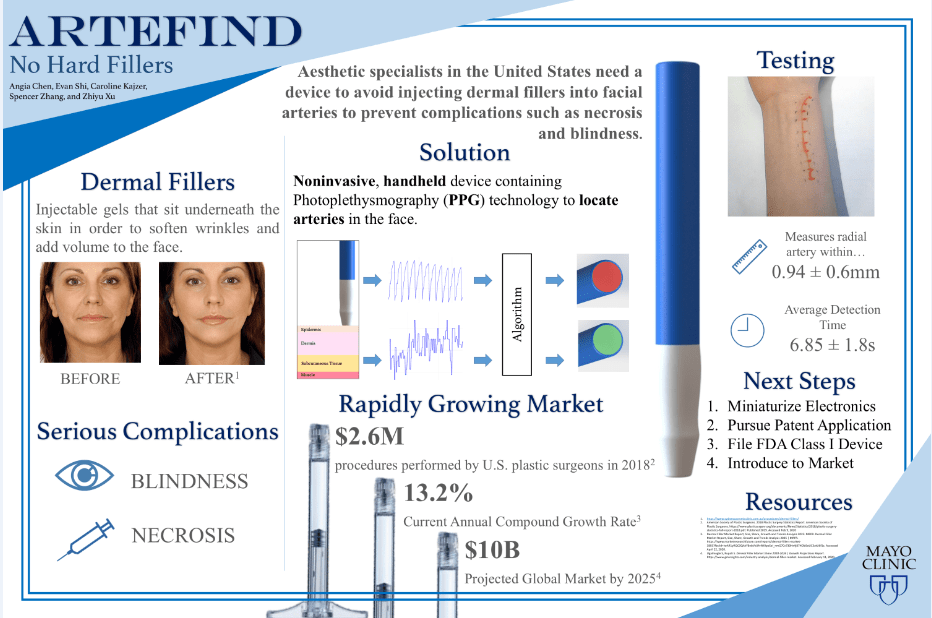Device for Artery Localization during Dermal Filler Procedures
Student Team: No Hard Fillers
Angia Chen Caroline Kajzer, Evan Shi, Zoe Xu, and Spencer Zhang
Sponsor:
Alison Bruce, M.B., Ch.B., The Mayo Clinic


Project Description:
The ultimate goal of this project is to develop a method to localize arteries to help prevent arterial occlusions during dermal filler injection procedures. Artefind is a non-invasive, reliable, user-friendly, and cost-effective device that has been developed for the detection of arteries in the face, allowing users to avoid arteries during facial injections. Facial dermal filler injection, a popular dermatological procedure, can lead to serious complications such as blindness if the filler is injected into an artery. Currently, there is no commonly used device on the market that can detect facial arteries. Injectors typically rely on their experience and manual syringe aspiration, an unreliable technique. Here, we developed a pen-shaped portable handheld device with the capability to detect facial arteries non-invasively. The device utilizes the concept of photoplethysmography (PPG). When the tip of the device is pressed against the face, a light source illuminates the tissue and a light sensor measures the reflected light amplitude. An algorithm implemented on a microprocessor determines if the signal received by the light sensor is pulsing in the frequency range of a normal heartbeat. If so, the algorithm decides that the sensor must be directly above an artery and an indicator light shines to inform the user. Testing on the radial artery was performed to prove accuracy (<1mm tolerance) and short operation time (<1min) of the device. Positive user feedback was received on both function and usability. The novelty and patentability of Artefind have been investigated in a preliminary evaluation of reference designs. Our device is likely novel, as most patented PPG applications are used for monitoring patients’ physiologic parameters or for diagnosing vascular diseases. No active patents are found specifically for artery detection in the face, which is the essential functionality and innovative capability of the proposed device.

